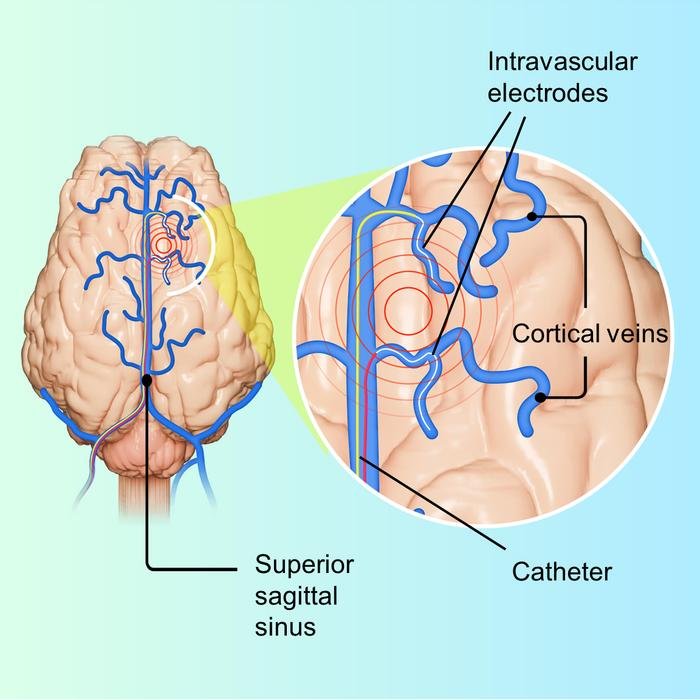Researchers at the University of Osaka have introduced a novel technique for recording brain activity by threading ultra-thin electrodes through blood vessels, offering a safer and less invasive alternative to traditional neurosurgical methods. This approach could reshape how clinicians diagnose and treat neurological disorders such as epilepsy, and it opens new possibilities for advanced brain-computer interfaces.
Conventional methods for capturing brain signals typically involve removing part of the skull to place electrodes on the brain’s surface or inserting them directly into brain tissue. These procedures carry significant risks, including infection, inflammation, and long recovery times. Non-invasive techniques like EEG are safer but lack the spatial resolution needed to monitor deep brain structures. The Osaka team’s method bridges this gap by delivering high-fidelity recordings without open-brain surgery.
Led by Professor Takufumi Yanagisawa, the research team used a catheter to guide ultra-thin wire electrodes into the cortical and deep veins of pig brains. Once in place, the electrodes successfully recorded brainwave activity with precision comparable to conventional invasive methods. Importantly, the technique allowed access to deep brain regions that are typically difficult to monitor without penetrating tissue.
In addition to passive recording, the researchers demonstrated active stimulation. Electrodes positioned in the motor cortex were able to evoke muscle responses in the face and shoulders, confirming the system’s potential for therapeutic use. This dual capability—monitoring and stimulation—could support closed-loop systems for managing epilepsy, movement disorders, and other neurological conditions.
Dr. Takamitsu Iwata, the study’s lead researcher, emphasized the broader implications of the technology. By enabling access to deep brain signals through the vascular system, the method could support the development of next-generation brain-computer interfaces. These systems may one day allow individuals with severe paralysis to communicate or control external devices using thought alone.
The technique’s minimally invasive nature also makes it more accessible for clinical deployment. It reduces surgical risk, shortens recovery time, and could be adapted for outpatient procedures. This positions it as a promising tool not only for research but also for routine neurological care.
Press Release: Less invasive brainwave recording breakthrough
Abstract in Advanced Intelligent Systems: Microendovascular Neural Recording from Cortical and Deep Vessels with High Precision and Minimal Invasiveness

